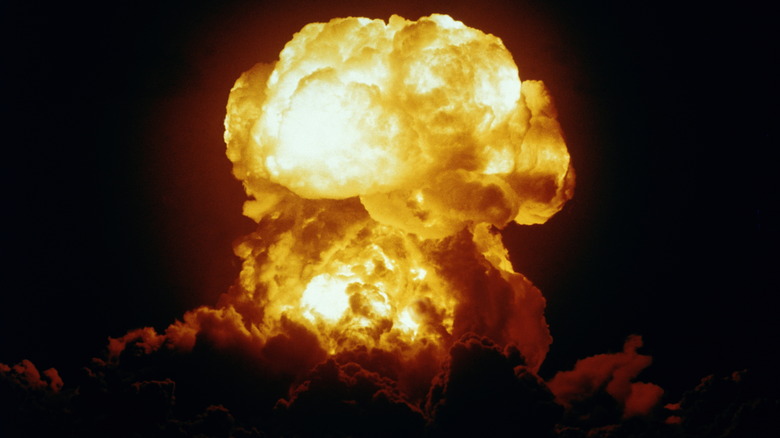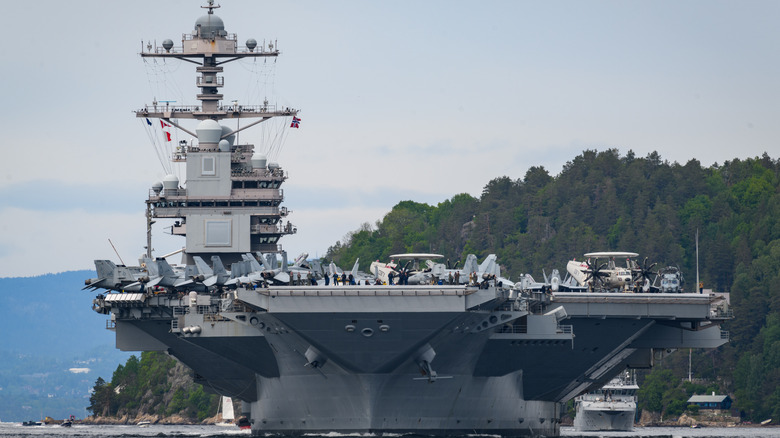Are Aircraft Carriers Armed With Nuclear Bombs?
Modern aircraft carriers are some of the largest war machines ever constructed, and they carry with them a massive air force capable of dealing destruction on an incredible scale. Carriers are armed with a variety of weapon systems, which are primarily used for defense. Much of a carrier's offensive capabilities lie with its air force, which can consist of as many as 75+ aircraft on the United States Navy's newest class of carrier, the Gerald R. Ford-class carrier. So far, one has been launched, though others are on the way.
Within its weapon stores, an aircraft carrier holds all kinds of ordnance, but the question of whether or not a carrier is armed with nuclear bombs isn't as straightforward as you might think. While the carrier doesn't keep nuclear arms onboard for direct attacks using something like a cruise or intercontinental ballistic missile (ICBM), many of the aircraft that fly in and out of its hangar decks are fully capable of carrying a variety of nuclear munitions, so the answer is both a yes and a no.
Of course, the United States government has never confirmed or denied the presence of nuclear weapons aboard modern aircraft carriers, so even the above answer isn't technically accurate. That said, some declassified documents do indicate that carriers and other surface ships have carried nuclear weapons, though this occurred in the latter part of the 20th century. For example, the USS America (CV-66) deployed in support of Operation Desert Storm in 1991 with B57 nuclear depth bombs and B61 nuclear strike bombs onboard.
The Denuclearization of the Surface Fleet
After Operation Desert Storm, the U.S. Navy began the denuclearization of its surface fleet, as ordered by the then President George H.W. Bush. Each of the various surface vessels' onboard nuclear divisions were disbanded over time, and the only nuclear weapons the Navy has confirmed to be at sea are found within the launch tubes of its fleet of Ohio-class nuclear missile submarines. In 1999, the USS Louisiana (SSBN-743), an Ohio-class sub, docked in Crete with 24 Trident ICBMs armed with around 192 nuclear warheads.
Denuclearization came about for several reasons, but mainly, the Navy was worried about accidents. Several mishaps occurred in the 20th century, including the loss of nuclear weapons, resulting in several broken arrow events. To date, the U.S. hasn't reversed its denuclearization policy regarding its surface ships, nor has it confirmed that nuclear arms have been reintroduced. That said, the F-35A is capable of carrying the B61-12 bomb, capable of delivering a 50- kiloton nuclear blast.
Despite this, the Navy doesn't have a public policy to carry nuclear weapons aboard surface ships, either by a carrier's air force or another means. Meanwhile, China and Russia have reintroduced tactical nuclear weapons to their surface vessels. This may push the U.S. to rethink its stated policy of denuclearization. Should that happen, aircraft carriers would have the capacity to carry all kinds of nuclear warheads and various weapon systems to deliver them. Until that happens, no aircraft carrier actively serving in the U.S. Navy carries nuclear weapons (that the public knows about).

